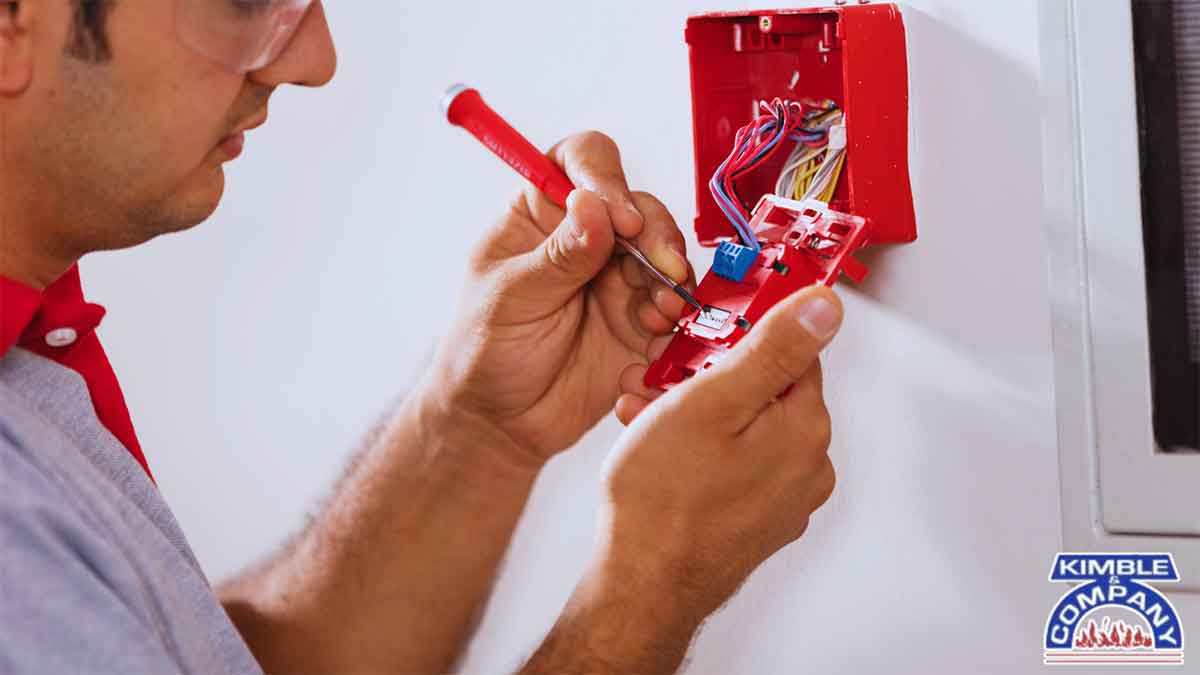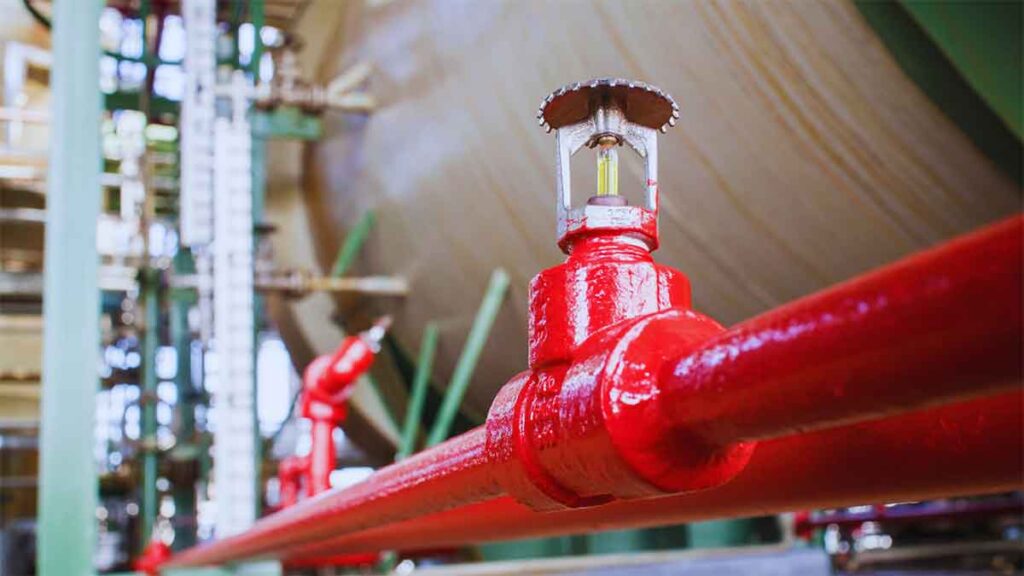Fire safety is critical for property owners, business managers, and landlords. Commercial and residential buildings are at higher risk for fires, legal liabilities, and operational disruptions without proper fire inspection services. Regular inspections help identify hazards before they escalate, ensuring that fire protection systems remain functional and compliant with local fire codes.
With its dense population and aging infrastructure, Los Angeles has strict fire safety regulations designed to protect tenants, employees, and businesses. Property owners can mitigate risks, enhance safety, and avoid costly penalties by prioritizing routine fire inspections.
What Are Fire Inspection Services and Why Do They Matter?
Fire inspection services are a systematic review of a building’s fire safety systems, structural elements, and emergency procedures. They are designed to verify that a property meets the safety criteria outlined by local, state, and federal fire authorities. More importantly, they ensure that all fire protection systems will perform effectively when lives are on the line.
Inspections are carried out by licensed professionals who evaluate everything from fire alarms to fire sprinkler systems, checking each component for performance, accessibility, and legal compliance. These services are especially important in commercial, multi-unit residential, and industrial buildings, where risks are greater due to high occupancy or the presence of flammable materials.
Major Goals of a Fire Inspection
Fire inspections serve multiple purposes that all center around one core objective: safety.
- Identifying Hidden Fire Hazards
Not all fire risks are immediately visible. Inspectors look for overloaded electrical circuits, improper storage of flammable materials, and faulty wiring that may pose a threat. They also assess potential obstructions in exit paths and stairwells that could slow evacuation.
- Confirming Systems Are Operational
All critical systems must be ready to activate in a fire emergency. That means functioning fire alarms, reliable fire sprinkler performance, visible exit signage, and accessible extinguishers. A professional fire alarm inspection checks battery levels, sensors, sound output, and communication links to ensure the system functions properly during a real emergency.
- Evaluating Emergency Preparedness
A well-prepared building saves lives. Inspectors verify evacuation plans, make sure routes are clearly marked, and ensure fire drills have been conducted if required. They also confirm that emergency lighting works as expected in case of power failure.
How Do Fire Inspections Ensure Tenant and Employee Safety?
Fire inspections directly impact the safety of the people inside your building. In an emergency, a fast response time can mean the difference between evacuation and tragedy. Routine inspections help buildings avoid surprises by ensuring that systems are fully operational at all times.
They also help reduce panic. When tenants and employees know the property is regularly checked by professionals and that alarms and sprinklers work as intended, they gain a sense of trust in their environment.
Critical Fire Safety Areas Evaluated
During a fire inspection, professionals evaluate a range of systems and structural elements:
- Fire Alarm Systems
Inspectors examine fire alarm panels, sensors, manual pull stations, and notification devices to verify full system coverage. Fire alarm inspection ensures timely detection and response in an emergency.
- Fire Sprinkler Systems
The fire sprinkler system is one of the most effective tools for containing fires. Inspectors test water pressure, confirm there are no obstructions, and ensure the heads and valves are in working order.
- Electrical Components
Worn-out wiring and overloaded circuits can trigger fires. Inspectors evaluate breaker boxes, outlets, and major electrical systems to confirm they’re up to code and safe to operate.
- Emergency Exits and Lighting
Safe evacuations depend on clearly marked and accessible exits. Inspectors confirm that hallways are unobstructed and that emergency lighting and illuminated signage are functional.
- Flammable Materials
Materials like gas, chemicals, or even stacks of paper increase fire risk if not stored correctly. Inspectors ensure that hazardous substances are safely contained and labeled in accordance with safety guidelines.
By covering all these areas, inspections provide building owners and managers with the confidence that their fire protection services are functioning as intended and ready to respond when needed.
How Often Should Fire Inspections Be Conducted?
The frequency of fire inspections depends on several key factors, including the building’s occupancy type, layout, operational use, and associated fire risk. While most commercial properties in Los Angeles require at least one inspection annually, high-risk facilities such as healthcare centers, industrial sites, and high-rise buildings may need more frequent checks, ranging from quarterly to monthly, to meet code requirements and maintain safety readiness.
This is where Reg 4 becomes essential. Enforced by the Los Angeles Fire Department, Reg 4 requires scheduled inspections, testing, and maintenance of critical fire safety systems such as alarms, sprinklers, standpipes, and smoke control equipment. These Proactive Fire Inspections must be completed by certified testers and formally documented for LAFD compliance. Skipping or delaying inspections can result in penalties, so staying current is the best way to avoid fines and stay compliant while protecting your property.
Fire Inspection Laws and Requirements
Fire inspection schedules are not randomly assigned. They’re defined and enforced by multiple regulatory bodies, all working to ensure that fire protection services are up to standard and capable of responding when it matters most.
- NFPA (National Fire Protection Association): The NFPA provides the foundational codes that govern fire alarm design, fire alarm inspection, sprinkler system maintenance, and emergency system functionality. For example, NFPA 25 outlines testing intervals for water-based systems like fire sprinkler systems, while NFPA 72 addresses fire alarm system inspection and testing.
- OSHA (Occupational Safety and Health Administration): OSHA requires employers to maintain emergency action plans and inspect fire protection equipment regularly. These include accessible exits, emergency lighting, and functional fire extinguishers.
- Los Angeles Fire Code: Locally, the city’s fire code adds another layer of regulation. High-occupancy buildings, schools, healthcare facilities, and any property subject to Reg 4 must comply with enhanced inspection and reporting protocols to ensure occupant safety and building integrity.
The bottom line? Regular inspections are a legal mandate, not a suggestion. They are the most direct way to avoid fines and stay compliant with both local and national standards. Keeping a well-maintained inspection schedule also ensures your fire protection systems are ready for emergencies—and that your property remains safe, insurable, and operational.
The Long-Term Benefits of Fire Inspection Services
Fire inspections offer more than just regulatory compliance; they provide long-term protection for businesses, employees, and tenants. A fire incident can result in business downtime, legal liabilities, and expensive repairs. A well-maintained fire protection system prevents costly disasters, minimizes operational disruptions, and safeguards assets.
How Do Tenants and Employees Benefit?
Regular fire inspections create a safer environment for those who live and work in a building. Well-maintained fire alarm installation and fire suppression systems increase confidence in a property’s safety and preparedness.
- Increased Trust: Tenants and employees feel secure knowing the building meets fire safety standards and undergo regular inspections.
- Improved Emergency Preparedness: Fire drills and updated fire alarm systems ensure that occupants know how to respond in an emergency.
- Peace of Mind: A dedicated fire protection company ensures that safety remains a top priority, creating a reliable and well-managed environment.
Secure Your Property with Professional Fire Inspections
Fire inspection services are a fundamental part of protecting lives and property. Routine inspections identify fire hazards, ensure compliance with safety codes, and keep fire protection systems functioning properly.
Neglecting fire safety can lead to devastating consequences, including legal liabilities, operational downtime, and financial losses. A proactive approach safeguards your business and fosters a safer environment for employees and tenants.
Fire safety is not optional. Waiting until an emergency happens can cost lives and irreparable damage. Ensure your fire sprinkler system, fire alarm installation, and emergency response measures are fully operational. Partner with Kimble & Company Fire Protection Systems for expert fire inspections, system maintenance, and compliance solutions. Call Kimble & Company Fire Protection Systems today to schedule an inspection and keep your property, employees, and tenants safe



